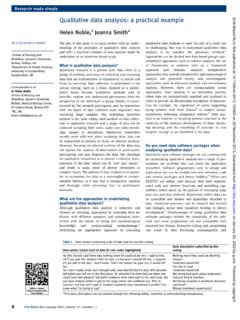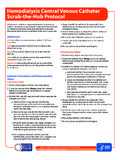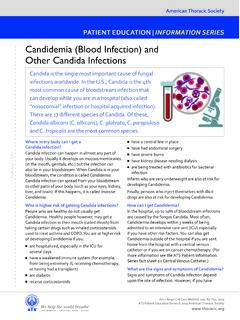Transcription of International GCSE Biology - Edexcel
1 Centre NumberCandidate NumberWrite your name hereSurnameOther namesTotal MarksPaper ReferenceTurn over P41536A 2013 Pearson Education *P41536A0128*BiologyUnit: KBI0/4BI0 Science (Double Award) KSC0/4SC0 Paper: 1 BWednesday 9 January 2013 MorningTime: 2 hours KBI0/1B 4BI0/1 BKSC0/1B 4SC0/1 BYou must have:RulerCalculatorInstructionst Use black ink or ball-point Fill in the boxes at the top of this page with your name, centre number and candidate Answer all Answer the questions in the spaces provided there may be more space than you Show all the steps in any calculations and state the The total mark for this paper is The marks for each question are shown in brackets use this as a guide as to how much time to spend on each Read each question carefully before you start to answer Keep an eye on the Write your answers neatly and in good Try to answer every Check your answers if you have time at the CertificateEdexcel International GCSE2*P41536A0228*Answer ALL The diagram shows some structures in the human breathing system.
2 (a) Name structures A and B.(2)A ..B .. (b) The table shows the level of two gases, X and Y, in blood entering and leaving the lungs during the process of gas of gas in cm3 per 100 cm3 of bloodBlood entering lungsBlood leaving (i) Name the two gases.(2)gas X ..gas Y ..AB3*P41536A0328*Turn over (ii) How much of gas X enters 100 cm3 of blood, before the blood leaves the lungs?(1).. cm3 (iii) What term is used to describe how the process of gas exchange takes place? Put a cross in the box to indicate your answer.(1) A active transport B diffusion C transpiration D osmosis(Total for Question 1 = 6 marks)4*P41536A0428*2 The passage describes selective breeding. Complete the passage by writing a suitable word in each of the spaces.
3 (4) Selective breeding involves .. choosing organisms with desired .. These organisms are allowed to breed and produce .. The process is .. for several generations.(Total for Question 2 = 4 marks)5*P41536A0528*Turn over 3 This food chain shows feeding relationships in paddy fields in Sri Lanka and India. rice beetle Asian toad mongoose (a) (i) Name the producer.(1).. (ii) Name the secondary consumer.(1).. (b) Give two environmental factors that could affect the growth of the rice crop.(2)1 ..2 .. (c) Suggest why a farmer might choose to use a chemical pesticide in his paddy field.(2).
4 (d) Describe how the farmer could use biological control in his paddy field.(2)..(Total for Question 3 = 8 marks)6*P41536A0628*BLANK PAGE7*P41536A0728*Turn over 4 The photograph shows a variegated leaf. The dark (green) part of the leaf has cells that contain chloroplasts. The white part of the leaf has cells that do not contain chloroplasts. (a) Describe the role of chloroplasts in leaf cells.(2).. (b) The diagram shows a leaf cell from the green part of the leaf. Name the parts labelled A, B and C.(3)A ..B ..C ..ABC8*P41536A0828* (c) The diagram shows a plant with variegated leaves. The plant was destarched by leaving it in the dark for 24 hours. Leaf X then had a strip of black paper attached to both the upper and lower surfaces. It was then sealed in a flask containing a solution of sodium hydroxide, a substance that absorbs carbon dioxide.
5 Leaf Y also had a strip of black paper attached to both the upper and lower surfaces. The plant was then placed in the light for 24 hours and then a starch test was carried out on leaf X and leaf Y. The five leaves, A to E, show the possible appearance of leaf X and leaf Y after the starch yellow colour showing no starch present= blue black colour showing starch present (i) Which of the leaves A to E matches the result you would obtain after testing leaf X and leaf Y for starch?(2)leaf X ..leaf Y ..ABCDE leaf Yleaf Xwhite part of leafgreen part of leafsodium hydroxidesolution cotton wool plugstrip of black paper9*P41536A0928*Turn over (ii) Explain what happens in a leaf when it is destarched.(2).. (iii) Describe how the green pigment in leaf cells is removed safely before testing a leaf for the presence of starch.
6 (3).. (iv) Name the chemical used to test for starch.(1)..(Total for Question 4 = 13 marks)10*P41536A01028*5 The Bristol scale is used to classify human faeces. It is used to help diagnose patients who have problems with their alimentary 1separate hard lumps, like nutsType 2sausage-shaped but lumpyType 3like a sausage but with cracks on the surfaceType 4like a sausage, smooth and softType 5soft blobs with clear-cut edgesType 6fluffy pieces with ragged edgesType 7watery, no solid pieces (a) Suggest why a patient might produce Type 1 faeces.(1).. (b) Suggest why a patient might produce Type 7 faeces.(1)..11*P41536A01128*Turn over (c) Describe how food is moved through the gut.(3).. (d) Name the part of the gut where faeces are (i) stored(1).. (ii) expelled(1).
7 (e) Explain how egestion differs from excretion.(3)..(Total for Question 5 = 10 marks)12*P41536A01228*6 A student wanted to investigate the factors that influence the activity of soil organisms in a woodland. She decided to study one species of woodlouse, a small animal found under stones and rotting wood in damp and dark places. She used a trap to collect organisms in the woodland during the day time and during the night time. She counted the organisms collected before releasing them. Day time sample Night time sample From the day time sample she produced a table of |||| ||7spiders |1centipedes ||2beetles |||313*P41536A01328*Turn over (a) Complete the table below to show the results for the night time sample.(2)OrganismTallyNumberwoodlicespi derscentipedesbeetles (b) Use the data from the day time and night time samples to draw a bar chart to compare the number of organisms collected.
8 (5) 14*P41536A01428* (c) (i) Compare the number of organisms collected during the day time and during night time.(3).. (ii) Suggest an explanation for the change in the numbers of woodlice.(2).. (d) The organisms caught in the trap remained there for up to 10 hours before being counted. Suggest how this might affect the results obtained.(2)..15*P41536A01528*Turn over (e) Ecology involves the study of organisms in their environment. With reference to the investigation in this question, explain the terms (i) population(1).. (ii) community(1).. (iii) habitat(1)..(Total for Question 6 = 17 marks)16*P41536A01628*7 (a) Complete the table to show the characteristic features of the three groups of organisms. Use a tick ( ) if the group has the characteristic and a cross ( ) if the group does not have the characteristic.
9 The first box has been done for you.(4)GroupCan carry out photosynthesisHave a cell wallCan be pathogenicbacteria fungiviruses (b) The table below shows some characteristics shared by most animals. Complete the table by giving the missing characteristics and examples.(4)CharacteristicExample they require nutritioneating foodthey respirereleasing energy from carbohydratesome animals can flythey control their internal conditionsincrease of the population of foxes they grow 17*P41536A01728*Turn over (c) Another characteristic shown by animals is the ability to respond to their surroundings. For example, a person may withdraw their hand from a hot object. Describe the sequence of events that cause this response.(5)..(Total for Question 7 = 13 marks)18*P41536A01828*8 Mendel crossed together pure breeding pea plants with purple flowers and pure breeding pea plants with white flowers.
10 The offspring plants all had purple flowers. (a) Explain which phenotype is dominant.(2).. (b) In a second cross, the purple offspring plants were self-pollinated (pollen from a flower put on the stigma of the same flower). Suggest how Mendel made sure that all the purple offspring plants were self-pollinated.(2)..19*P41536A01928*Tur n over (c) (i) Use a genetic diagram to show the ratio of plants expected by crossing the purple offspring plants in part (b). Show the parental genotypes and gametes, and the offspring genotypes and phenotypes. Use F and f to represent the alleles.(4)Parent genotypesGametesOffspring genotypesOffspring phenotypes (ii) The plants actually produced in this cross were 36 purple and 8 white flowered plants. Calculate the ratio of purple to white flowered plants.(1)Answer.














